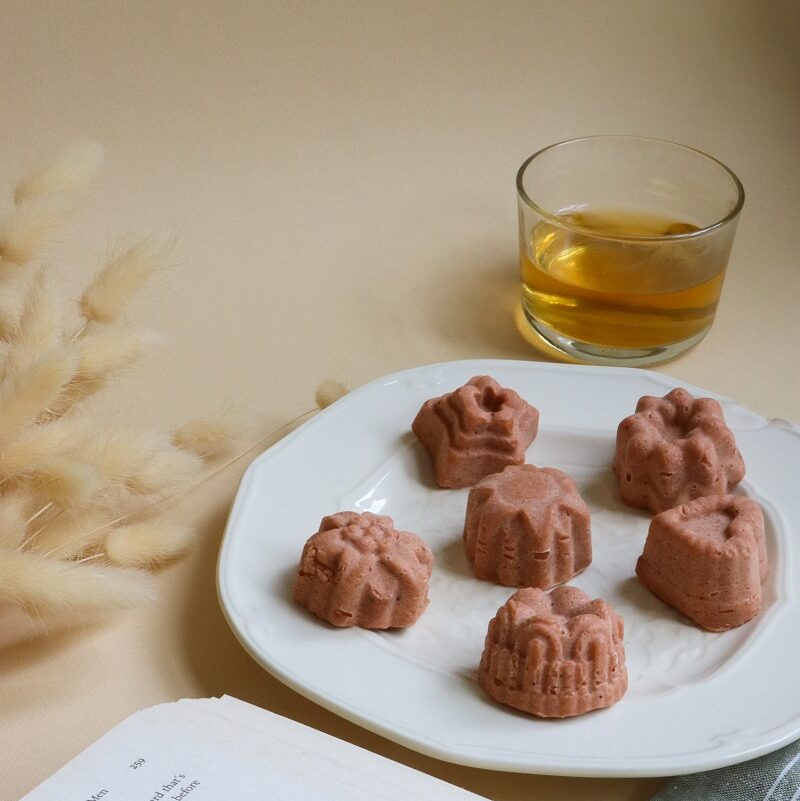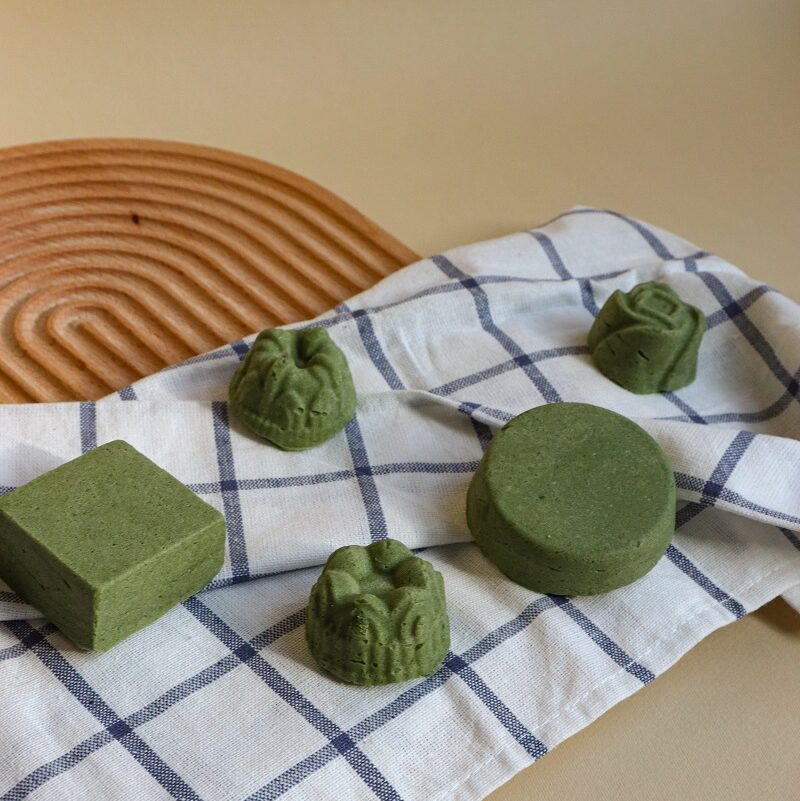“Shampoo bars?! How do they even work?”
I’m pretty sure my colleague wasn’t the only one who questioned the idea of solid shampoo.
You’ve probably already heard of shampoo bars when you clicked into this article. For the sake of those who haven’t heard of them until you stumbled upon this article (yay, welcome!), shampoo bars are basically shampoos that come in the solid form.
So what does that mean for you? Well, it means you are using a concentrated form of your typical liquid shampoo. It requires lesser water (do you notice that aqua is usually the first few in the ingredient list?), doesn’t use huge plastic bottles and takes up much less space in your bathroom! What is there not to love?
Whether you’re completely new to shampoo bars or still in the midst of learning more about them, this review of my personal journey with shampoo bars will address some of your concerns, and help you to weigh the pros and cons of shampoo bars before deciding if it is worth a change in your lifestyle.
Before We Begin…

What should you expect when you first start using shampoo bars? Some say that they go through a transition period, claiming experiences of heaviness, stickiness or waxiness and oiliness in their hair and scalp. They attribute these to our hair and scalp adjusting to the bars that no longer contain sulfates and silicones (more on this later).
Personally, I did go through all these for a painful 1.5 months, using shampoo bars from another brand. However, I have my suspicions that it was not about adjustment problems, because my hair condition improved just a few days after I switched to these sold at The Sustainability Project. (Note: I’m not sponsored in any way to write this article!) These shampoo bars are pH balanced, which I believe made the biggest difference after doing some research on the effects of pH on hair.
Whether your hair will undergo this transition period, the switch will definitely require some adjustments to your lifestyle. It’s not difficult at all, and I’ll help to walk you through some things to expect, so stick with me!
1. Do Shampoo Bars Really Work?
I struggled a lot with frizz and volume as I have fine hair and an oily scalp. Before coming across these shampoo bars, my hair would fall flat just one or two hours after a wash. On hot, humid days, I have to go with two washes a day.
Two key suspects? SLS (sodium laureth sulfate or sodium lauryl sulfate) – a harsh surfactant that strips your skin or hair of moisture – and silicones that build up over time, resulting in dull and nutrient-stripped hair.
After the switch, my scalp has become less oily, and so much softer and stronger with fewer tangles! These shampoo bars don’t dry out my hair, and in fact, it has never felt more moisturised.
2. Are Shampoo Bars Worth the Price Tag?
Undeniably, shampoo bars often come across as costly. A shampoo bar costs about $23-$24 for 65g, and one lasts about 7-8 weeks for me. I have mid-length hair and a crazy oily scalp that requires daily wash (2 rinses each time). This works out to about $12 a month, which will vary according to your hair needs.
Shampoo bars work great, but when it comes to price, some may be a little more hesitant. Compared to a drugstore brand, shampoo bars may be at least 5x more expensive. This is because they are made with organic ingredients that are more expensive compared to cheaper ingredients – typically harsh chemicals and water – found in the former.
As a working adult, I have control over my expenses. If I know I have to stock up on shampoo bars on a particular month, I adjust my spending in other areas. As they have shown great results for me, I can say for myself that they are definitely worth the price tag.
Some of you may be students, or are in circumstances that make it difficult to fork out $12 a month for shampoo bars. Don’t feel bad about it – always first make sure that you’re spending within your means while striving for an eco-friendlier lifestyle!
Read more: The Complete Guide To Using Shampoo Bars
3. Are Shampoo Bars Really Better for the Environment?

I’m always one for reducing waste first, then thereafter comes recycling. The shampoo bars are minimally packaged in paper. In addition, without the volume that water in liquid shampoos takes up, you’re eliminating the need for big plastic bottles that may or may not be recycled correctly.
Also, the shampoo bars are made locally, thus reducing the carbon footprint of transportation. Bonus if you opt to collect in-person at The Sustainability Project’s showroom and save on delivery packaging!
I also have to point out the use of palm oil derivatives in shampoo bars, which is a controversial subject. Palm oil is a very cheap resource, but it is also unpopular for the resulting deforestation and habitat loss. Some insist on avoiding them at all costs, and some believe that it’s okay to use as long as they are certified sustainable. Meanwhile, there are those who doubt the standards of “sustainable” palm oil, and others who believe that other oil substitutes are not necessarily greener.
It’s a dilemma that I myself am conflicted about. When choosing shampoo bars or any other solid soap products, my top consideration for eco-friendliness would be the packaging itself. Whether palm oil should be a concern to you, I’m not the one to tell you what to believe. A sustainable lifestyle varies from person to person, and you should adopt one that works best for you, and aligns with your personal beliefs.
4. Okay, Then How Do You Use a Shampoo Bar?
Shampoo bars take a while to get used to, but it really isn’t difficult at all. They lather really well – just make sure to thoroughly wet your scalp and hair before applying it across your scalp a few times.
Some hair tips that will help you wash better with less shampoo: the first wash will not lather as much because of the oil and build up, so there’s no need to try to get lots of lather. Do a second wash, and you’ll see that just a few applications will give you lots of lather. I also focus most of the lather on my scalp (instead of the hair ends) where there are more build-up and oil. As you wash off the shampoo, it will also get the dirt off your hair ends.
After every shower, I keep my shampoo bars dry in a bright and well-ventilated area so that they last longer. Some prefer soap dishes, but I use a soap bag/net because they are more space-efficient in my house.
Then comes the awkward ends of the bars – they’re too tiny to hold and tend to break into even tinier pieces when you try to use them. My tip is to crumble up the tiny pieces, dissolve them in water and apply them to my scalp. For seasoned shampoo bar users, do comment below on how you finish up the ends!
As the shampoo bars are not drying, I’m able to get away with not using a hair conditioner on lazy days. I also use a smaller amount of leave-on hair oil compared to the past. These are some cost-savings that you might want to factor in.
In case you aren’t aware, just like shampoos, hair conditioners come in solid bars too! However, they don’t lather like shampoo bars. Just a few strokes on the hair ends will suffice to give you even softer, silkier hair!
Read more: Deodorant Bar: Your 101 Guide
Worth the Try? You Decide.
Recently, I’ve been noticing quite a few advertisements coming from major brands about solid soap bars for the hair, face or body. Perhaps, we’re gradually moving away from the familiar shampoo bottles to shampoo bars, reflecting consumer demand for waste-lite essentials.
As with any products out there, shampoo bars may or may not work well for you. While eco-friendlier, they may cost more, and also require more effort than you’re used to. As with anything, you never know until you try it! These shampoo bars come in 25g, which can last about 2 weeks, just enough for you to know if they’re well-suited for you.
I hope you find equally (or even better) results as I did, good luck! 🙂


Great to discover fellow proud ‘treehuggers’ and not for it to be an insult! I think it’s a much more acceptable term and even a compliment these days!
Great article and glad you not only mention the importance of natural ingredients but also many other aspects such as the very important ‘palm oil’ factor and the sustainable packaging aspect too!
I successfully managed to find a great supplier that ticked all these boxes (and more) for shampoo bars and conditioner bars that really worked on my long dark hair when I used to live in the UK; they’re here at https://thesolidbarcompany.com/collections/shampoo-conditioner-bars
But when I moved to the USA last year I was in despair until I realized that they also have a ‘sister’ outlet in South Carolina here https://thesolidbarcompanyusa.com/
So I have no hesitation in recommending them to you and your readers.
Keep up the good work, Maddie x